Meals not marriage for girls in rural Nepal
Thursday 15 March is International School Meals Day, which aims to raise awareness of good nutrition for all children regardless of their circumstances. School meals are an integral part of the World Food Programme (WFP)'s work— a daily school meal can mean not only better nutrition and health, but also increased access to and achievement in education. Here we take a look at their impact in Nepal, and the further benefits they might provide.
In Far Western Nepal, boys and girls have very different childhoods. Boys eat first, are given more food than their sisters, do less housework and marry later.
For girls, marriage and not school work can dominate their childhoods. Nepal is home to the third highest levels of child marriage in Asia. Thirty seven percent of girls marry before the age of 18, and 10 percent marry before they are 15. The legal age for marriage in Nepal is 20.
The World Food Programme (WFP) is working to keep all children in school by providing them with nutritious meals, even in the most remote communities. These meals are a powerful incentive for parents to send their children to school — and to keep them there.
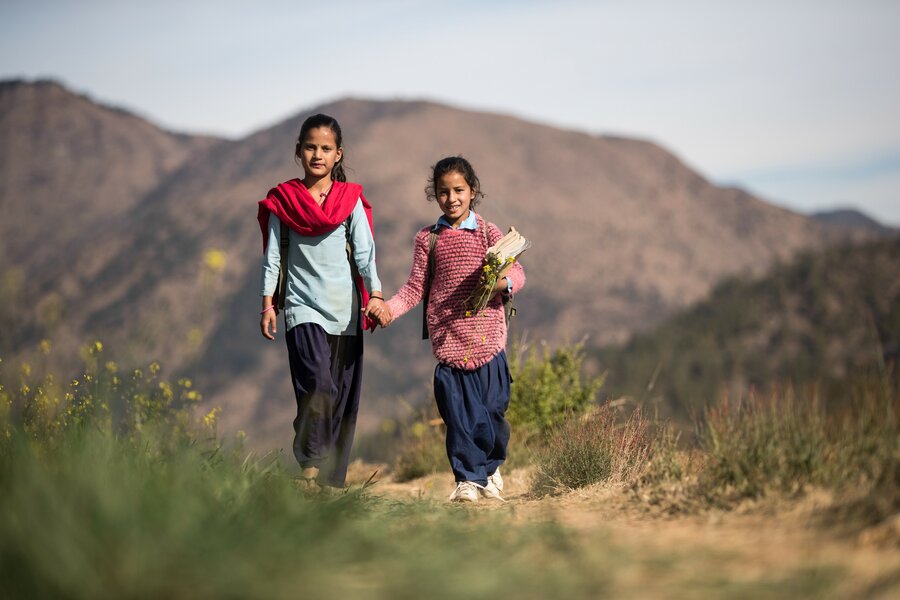
Child marriage in Nepal
High levels of poverty, a low value attached to daughters, a patriarchal culture and a lack of access to education drive the high levels of child marriage in Nepal.
The repercussions of child marriage are devastating. Married girls in Nepal are ten times more likely not to attend school than their unmarried peers. They can also be subjected to emotional, physical and sexual violence from their husbands. Married boys are often pressured to begin working to support their family.
Once married, girls lose the opportunity to overcome the cycle of poverty through education. By staying at home and raising children, their ability to earn their own income to support their families is limited.

School meals encourage more girls to attend school
WFP and the Ministry of Education of Nepal, with generous support from the United States Department of Agriculture (USDA), have been providing daily midday meals to 260,000 school children in Nepal. Of these, 135,000 are girls.
Far Western Nepal is located a one-hour flight then seven to eight-hour drive from the capital, Kathmandu. This remote area offers few opportunities for women and girls to break the cycle of poverty, start their own businesses and further their education.
Where parents struggle to feed their children, WFP's School Meals Programme serves as an incentive for parents in these communities to send their daughters to school.
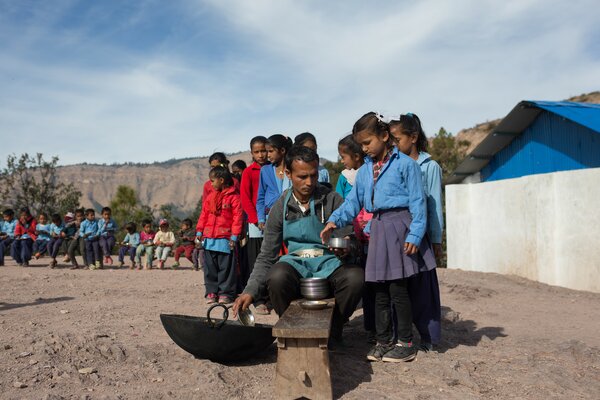
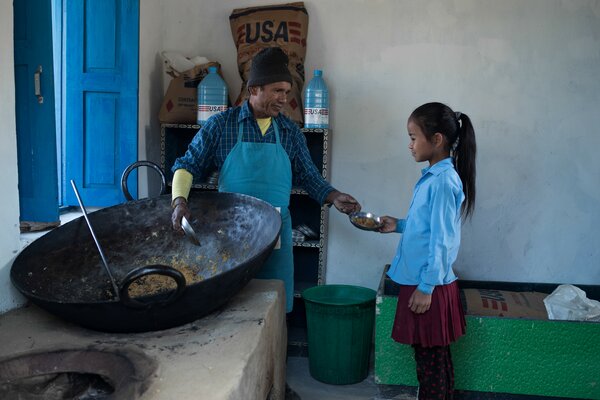
Discussing the taboo subject of child marriage
Bir Bahadur Bohra's two children attend Shree Kalika Primary School in Dadeldhura district in Far Western Nepal. Bohra himself was a student in this school and returned to serve as an English teacher soon after completing his education.
"I got married when I was 15 and my wife was only 13 years old," he says. "It is a cultural norm for children to get married so young in the Far West. However, things are slowly changing for the better. Now it is important for children to get an education so that they can have a meaningful future."
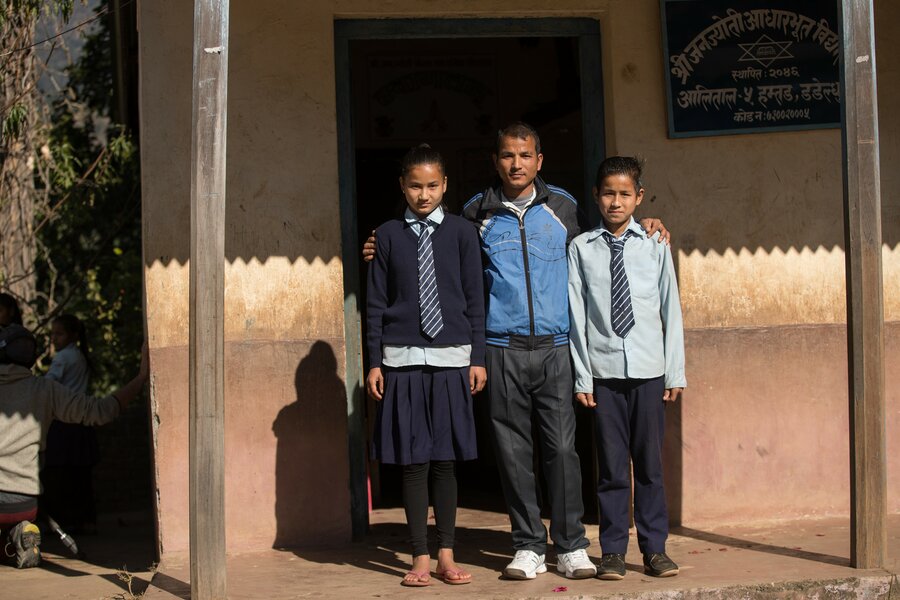
Today, his son Prakash studies in grade 7 and his daughter Basanti in grade 6. Both of them attend school regularly and have aspirations for the future.
"I want to be a teacher like my father when I grow up," says Prakash. "I wish to be a nurse in the hospital," adds Basanti.
Bir Bahadur is pleased to see that both his children are taking their education seriously and don't ask to get married. In addition, they do not skip school after their lunch break as they receive a midday meal at school. Around 122 children attend Shree Kalika School every day and there have been very low incidents of child marriage from children who attend this school.
An Investment to last a lifetime
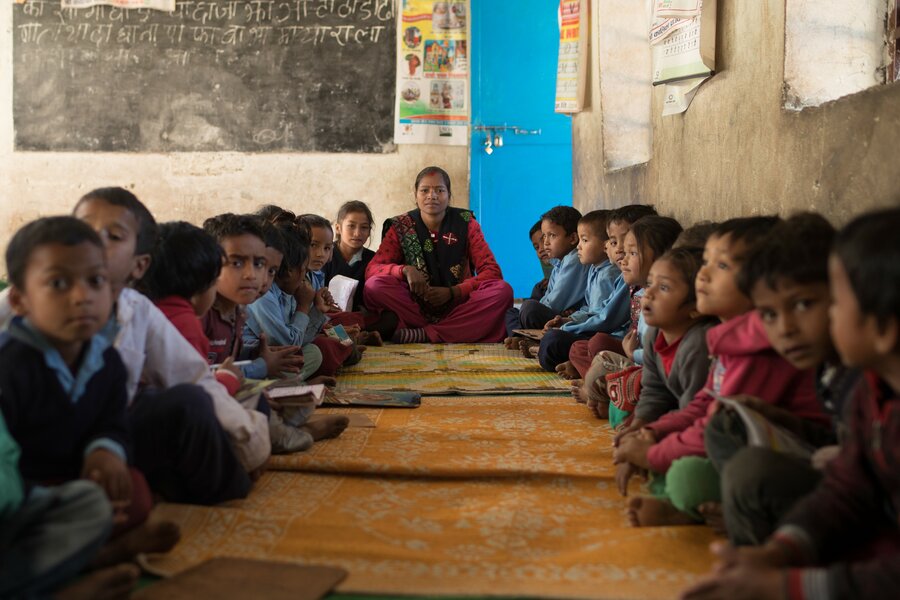
Nanda Kumari Saud is an early grade teacher at Shree Janjyoti Lower Secondary School in Dadeldura district. Like Bir Bahadur, she also returned to teach in the school where she acquired an education. She was also a recipient of the school meals programme while in school.
While recalling her childhood days, Nanda Kumari remembers walking for almost two hours to reach school and being hungry by the time she got there.
"If it was not for the midday meals we received at school, none of us would have stayed all day to study. Because of the meals we stayed at school and studied after the lunch break," says Saud. "Because I completed my schooling, I am now independent and I can stand on my feet and even provide for my family."
Helping a child to learn
"In Mid and Far Western Nepal, many families don't have enough food and poor parents often struggle to feed their children," says Country Director Pippa Bradford. "A child can't learn if all she's thinking about is her empty stomach. School meals act as an incentive for parents to send their children to school, especially girls, and help to break the cycle of hunger and poverty."
School meals serve as a powerful means to ensure girls attend school and contribute to gender parity and women's empowerment, which is at the heart of the 2030 Agenda for Sustainable Development. Progress on the Sustainable Development Goals means progress for all women, everywhere.
